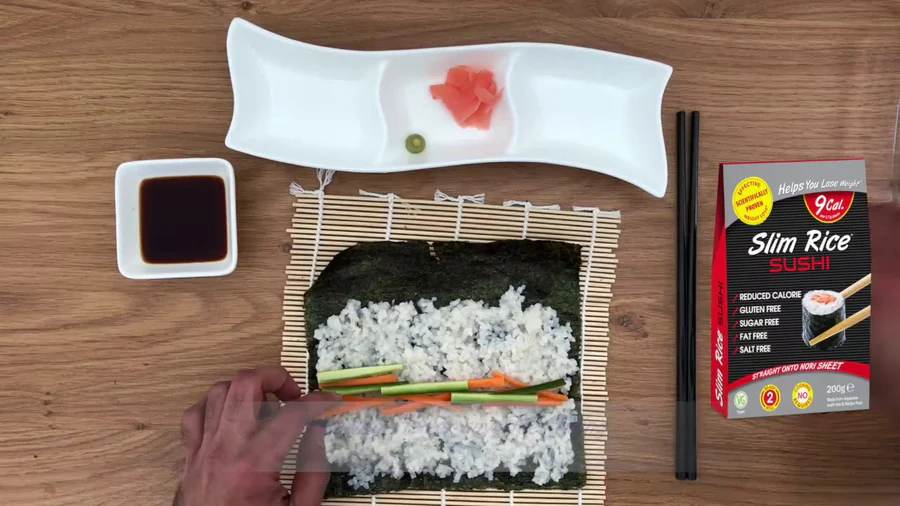
Sticky rice, also known as glutinous rice, is a staple in many Asian cuisines. Its unique texture and sweet flavor make it a versatile ingredient in various dishes, from savory to sweet. Beyond its culinary appeal, sticky rice offers several health benefits, particularly when considering low-calorie foods and nutrient-dense options. In this blog, we will explore the health benefits of sticky rice and how it fits into a balanced, low-calorie diet.
Nutritional Profile of Sticky Rice
Sticky rice is rich in carbohydrates, which provide a quick source of energy. While it is not a significant source of protein or fat, it does contain essential vitamins and minerals such as:
-
Vitamin B6: Important for brain health and metabolism.
-
Magnesium: Helps with muscle and nerve function, blood sugar levels, and blood pressure.
-
Phosphorus: Vital for healthy bones and teeth, and also plays a role in how the body uses carbohydrates and fats.
Despite its name, sticky rice does not contain gluten, making it a safe option for those with gluten sensitivities or celiac disease.
Low-Calorie Food Options with Sticky Rice
When aiming for a low-calorie diet, portion control and preparation methods are key. Sticky rice can be part of a low-calorie meal when consumed in moderation and combined with other low-calorie foods. Here are some ways to enjoy sticky rice without overloading on calories:
1. Sticky Rice with Steamed Vegetables
A simple yet satisfying dish, combining sticky rice with a variety of steamed vegetables like broccoli, carrots, and bell peppers, can make for a nutrient-dense, low-calorie meal. This combination provides fiber, vitamins, and minerals while keeping the calorie count low.
2. Sticky Rice and Lean Protein
Pairing sticky rice with lean proteins such as grilled chicken breast, tofu, or fish can help balance your meal. Lean proteins are lower in calories and high in essential amino acids, supporting muscle maintenance and overall health.
3. Sticky Rice Salad
Create a refreshing sticky rice salad by mixing cooked sticky rice with fresh herbs, chopped vegetables, and a light dressing made from lime juice, fish sauce, and a touch of honey. This dish is light, flavorful, and perfect for a low-calorie diet.
Health Benefits of Sticky Rice
1. Energy Boost
Sticky rice is an excellent source of carbohydrates, providing a quick and sustained energy boost. This makes it an ideal food for athletes or anyone needing a rapid source of fuel.
2. Digestive Health
Sticky rice is easily digestible, making it suitable for people with sensitive stomachs. Its simple composition means it is less likely to cause digestive discomfort compared to more complex carbohydrate sources.
3. Gluten-Free Alternative
For those with gluten intolerance or celiac disease, sticky rice serves as a safe and delicious alternative to gluten-containing grains like wheat, barley, and rye.
4. Supports Metabolic Health
The presence of essential nutrients such as magnesium and phosphorus in sticky rice can support metabolic health. Magnesium plays a role in over 300 enzymatic reactions in the body, including those involved in energy production and protein synthesis.
Also Read: Konjac Rice vs. Regular Rice: Which is Better for Your Diet?
Incorporating Sticky Rice into a Low-Calorie Diet
Incorporating sticky rice into a low-calorie diet can be simple and delicious. Here are a few tips to help you enjoy this nutritious grain while keeping your calorie intake in check:
1. Portion Control
Stick to smaller portions of sticky rice to manage calorie intake effectively. A serving size of about half a cup of cooked sticky rice can provide enough energy without adding too many calories.
2. Balance with Vegetables and Protein
Always pair sticky rice with plenty of vegetables and a source of lean protein. This not only enhances the nutritional value of your meal but also helps you feel fuller for longer, reducing the likelihood of overeating.
3. Healthy Cooking Methods
Opt for steaming or boiling sticky rice instead of frying it. This preserves its nutritional value and avoids adding unnecessary calories from cooking oils.
4. Use as a Base for Healthy Meals
Use sticky rice as a base for nutritious meals like Buddha bowls, stir-fries, and salads. These dishes can be customized with a variety of low-calorie, nutrient-dense ingredients to suit your taste and dietary needs.
Low-Calorie Foods to Pair with Sticky Rice
To keep your meals low in calories and high in nutrients, consider pairing sticky rice with these low-calorie foods:
1. Leafy Greens
Spinach, kale, and other leafy greens are low in calories but high in vitamins, minerals, and fiber. They make an excellent addition to sticky rice dishes.
2. Cruciferous Vegetables
Broccoli, cauliflower, and Brussels sprouts are not only low in calories but also packed with essential nutrients and antioxidants.
3. Lean Proteins
As mentioned earlier, lean proteins such as chicken breast, tofu, and fish are low in calories but high in protein, making them perfect companions for sticky rice.
4. Low-Calorie Noodles
If you’re looking to mix things up, consider adding low-calorie noodles to your sticky rice dishes. These noodles are often made from ingredients like konjac, which is low in calories and high in fiber.
Conclusion
Sticky rice can be a valuable addition to a low-calorie diet, offering a range of health benefits and versatility in meal preparation. By combining it with other low-calorie foods and maintaining portion control, you can enjoy its delicious taste while staying on track with your health goals. Whether you’re looking for a quick energy boost, a gluten-free alternative, or a nutrient-dense meal option, sticky rice fits the bill perfectly. So, go ahead and incorporate this delightful grain into your diet and reap its numerous health benefits.